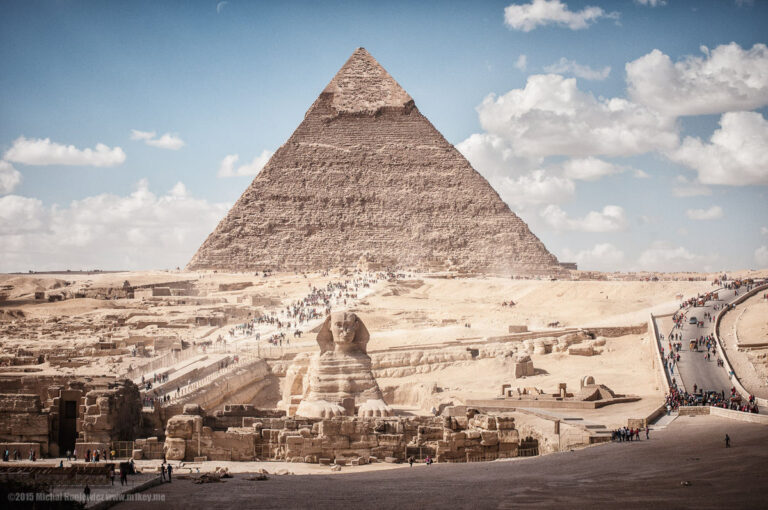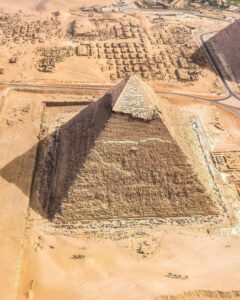The Magnificent Pyramid of Khafra: An Insight into the Fourth Dynasty Pharaoh’s Reign (2558–2532 BCE)

The Pyramid of Khafre stands as an enduring testament to the power and legacy of the fourth-dynasty pharaoh, Khafra, who ruled over Egypt from 2558 to 2532 BCE. This monumental structure serves as the final resting place for the illustrious ruler, a tomb constructed with meticulous precision and grandeur.
Rising majestically to a height of 136.4 meters, the pyramid is a marvel of ancient engineering and architecture. Built on the Giza Plateau, it is the second-largest of the renowned Giza Pyramids, showcasing the mastery of the ancient Egyptians in designing and constructing colossal structures.

Khafre’s Pyramid is characterized by its distinctive features, including the casing of smooth Tura limestone that once adorned its exterior, giving it a radiant appearance. The pyramid complex also includes the Great Sphinx, a colossal limestone statue believed to represent Khafre himself, guarding the approach to the pyramid with an enigmatic and regal presence.

Inside the pyramid, a labyrinthine arrangement of passages and chambers reveals the intricate burial arrangements for the pharaoh. The inner sanctum, housing Khafra’s sarcophagus, reflects the religious and spiritual beliefs of the time, as the ancient Egyptians sought to ensure the pharaoh’s safe journey to the afterlife.
The Pyramid of Khafre stands not only as a burial site but also as a symbol of the pharaoh’s enduring influence and the advanced capabilities of ancient Egyptian civilization. Its colossal stature and architectural brilliance continue to captivate and inspire awe, inviting modern-day visitors to delve into the mysteries of Egypt’s rich past.